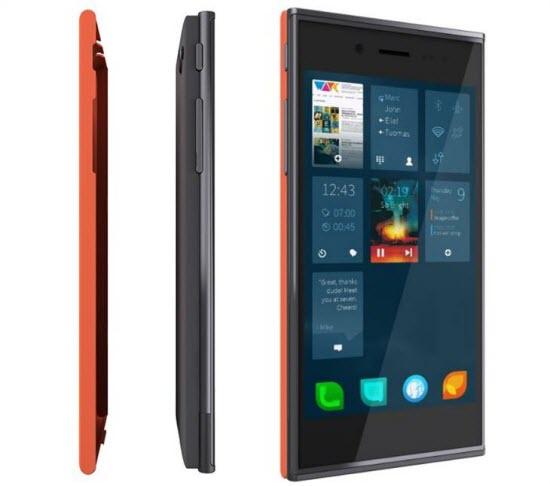
It feels like an eternity since a band of MeeGo engineers left Nokia to carry-out their very own endeavour dubbed Sailfish OS, a continuation of MeeGo OS gracing such smartphones as the Nokia N9 and N950. The group of ex-Nokian's collaborated under a new name, Jolla, and let their Sailfish OS set voyage into a ruffled ocean of mobile operating systems. But Jolla has only one goal in mind: creating an experience that stood out among the Android's and iPhone's of today. The gesture-based Sailfish OS and buttonless approach of the Jolla smartphone demands a second take and an open mind, but originality was never the concern.
The Sailfish OS was only half the battle for the Jolla team, and just yesterday they put their skeptics to rest by releasing their first smartphone. If native multitasking, app and data integration, and a fresh take on a cliched market of Android and iOS imitators has peaked your interests, Jolla has you covered.
It's quite refreshing to see an OS with hardware that demands just as much respect as the uniqueness of the software driving the ship. Just a glance at the Sailfish OS dismisses any notions of blandness, criticism which harks Apple's iOS, for instance. Where iOS and Android have led the fight in the mobile foray for so long, Jolla believes they can match the competition by being unique.
But Jolla has encountered plenty of resistance along the way towards delivering its own package, one of which was developing an interface that mattered with a selection of apps people demanded. It's very easy to get ahead of yourself if you're a manufacturer without an ecosystem. Many consumers are quick to address app selection and their current collection of digital content which they have purchased as reasons they're staying with their current mobile platform.

It's understandable, really. I have a stronger investment in Android than iOS, or Windows Phone Store. Transferring my purchased digital content is not really an option with any of these mobile operating systems, so I'm limited if I want to commit to any single operating system.
But Sailfish OS is Android app compliant meaning apps which run on Android smartphones can run on Jolla's Sailfish OS, but details have remained relatively light on the matter.
Are Android apps enough of a push to get Jolla's smartphone into consumer's hands?
I believe so, but the flip-side of the story is the hardware. The Jolla smartphone's hardware housing that swimming OS is jabbing into the hull of what Jolla calls the "Other Half," a dire attempt at setting their smartphone apart from the rest of the crowd.
The Other Half is the highlight of the Jolla smartphone's hardware. Our own Alex Wagner explained it best: "Users will be able to snap on "Other Half" rear covers that come in colors like orange and teal. Once a new Other Half is attached, things like the colors and fonts used in the software will change, and the Other Half parts can also be used to automatically launch an app when attached."
If it sounds gimmicky, the sleek design and implementation of the Other Half idealizes what many consumers are demanding from their smartphones: functionality. Other Half is available in an array of colors, but every Other Half leaves the removable battery untouched, as well as the microSD card slot accessible.

Both the user-removable battery and microSD card slot have dialed in my attention among the increasing amount of trade-offs which is plaguing the mobile market.
But is a removable battery and expandable storage enough to make Jolla's smartphone desirable?
Sure, Jolla's smartphone runs an operating system which will literally require users to learn something entirely foreign. And yes, users will most likely have to buy this device unlocked and off-contract seeing that many mobile carriers are committed to more mature and safe operating systems. But Jolla is taking their job seriously. They've identified with the current state of mobile very well as evidenced by the 4.5-inch display, 4G connectivity, 16GB standard on-board storage, microSD card slot, and removable battery. Android app compliance is the first step in getting a truly open-source platform like Sailfish OS into Google's revenue ecosystem, and these hardware features should not go unnoticed.
App selection and premium hardware are core competencies of any competitive smartphone in 2013. If the Jolla smartphone can deliver on these two fronts, I see no reason some solid advertising and carrier support can't let Sailfish OS set sail as a viable alternative to Android, BlackBerry, iOS, and Windows Phone.
For just a second, Dear Reader, I ask you to answer one question without letting your personal preferences get the best of you. Assuming you already knew how to use the Sailfish OS, would Google's app selection and Jolla's premium hardware be enough for you to try out Jolla's smartphone? I'm interested to hear your thoughts on this, so leave me a comment!
Images via Jolla, Brighsideofnews, and Jollatides.